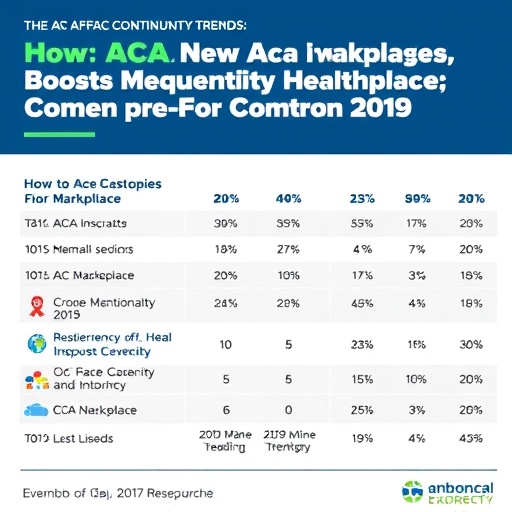In the rapidly evolving field of oncology, researchers continuously seek innovative approaches to improve diagnosis and treatment strategies. One of the most formidable challenges in cancer research is understanding the complex biology underlying tumors, particularly glioblastoma, one of the most aggressive types of brain cancer. Recent advancements in machine learning have opened up new avenues for researchers to dive deeper into the genetic intricacies of this deadly disease. A groundbreaking study led by Liu et al. has leveraged single-cell and spatial transcriptomics to unveil a basement membrane-related gene signature that could potentially reshape our understanding of glioblastoma.
The basement membrane is a pivotal structure in the body that provides support and anchorage for various cell types, playing a crucial role in tissue architecture and function. In glioblastoma, alterations in the basement membrane have been implicated in tumor progression, invasiveness, and patient prognosis. By employing advanced machine learning techniques, Liu and colleagues were able to sift through vast amounts of transcriptomic data to identify gene signatures that are closely linked to the basement membrane’s characteristics in glioblastoma tissues.
The study utilized cutting-edge single-cell RNA sequencing, a technique that allows researchers to analyze gene expression at a single-cell resolution. This approach is revolutionary as it reveals the heterogeneity present within tumors, providing insights into the various cell types involved in tumor growth and invasiveness. Previous studies had primarily focused on bulk tissue analysis, often obscuring the diversity of individual cells. This granular view offered by single-cell sequencing has enabled the identification of specific cell populations that may play decisive roles in glioblastoma biology.
Spatial transcriptomics further enriches our understanding by retaining the spatial context of gene expression within tissue samples. By mapping gene activity back to their original location in the tissue, researchers can observe the interactions between tumor cells and their surrounding microenvironment. Liu et al. effectively combined these techniques to create a comprehensive portrait of glioblastoma, resulting in the identification of genes that not only characterize the cancer but also implicate the basement membrane’s role in tumor behavior.
The researchers applied machine learning algorithms to analyze the data obtained from these advanced techniques. This computational approach enhanced their ability to discern patterns and relationships within the data that may not be immediately apparent through traditional analytical strategies. By training models on the transcriptomic profiles of glioblastoma samples, they could predict the relevance of specific genes related to the basement membrane, leading to the discovery of a novel gene signature.
Significantly, the identified gene signature holds promise not only for understanding glioblastoma pathology but also for potential therapeutic applications. Targeting the basement membrane-related pathways that are disrupted in glioblastoma may represent a novel strategy for treatment. This is particularly crucial given the limited effectiveness of current therapies, which often fail to address the aggressive nature of this malignancy and the challenges posed by the tumor microenvironment.
An intriguing aspect of the research is its potential to guide personalized medicine in neuro-oncology. By characterizing tumors based on their genetic signatures, clinicians may be able to tailor treatment plans that are more aligned with a patient’s unique tumor profile. The implications of this study extend to prognostic assessments as well, providing insights into which patients might have a more favorable or unfavorable outcome based on the expression of specific genes associated with the basement membrane.
In addition to the clinical implications, this research exemplifies the transformative power of interdisciplinary approaches in science. The fusion of machine learning with molecular biology and spatial analysis underscores how advanced computational methods can enhance our comprehension of complex biological systems. As scientists continue to explore the intersections of technology and medicine, innovations like those presented by Liu et al. will likely catalyze further breakthroughs in cancer research.
This research also highlights the importance of collaboration and resource-sharing within the scientific community. By utilizing publicly available datasets and encouraging open access to methodologies, researchers can build upon each other’s work, accelerating the pace of discovery. The transparent sharing of data and techniques fosters an environment where collective knowledge can flourish, leading to faster advancements in understanding and treating diseases like glioblastoma.
As we digest the findings from Liu et al.’s research, it is essential to recognize the broader implications for the field of cancer research. The methodologies applied in this study are not limited to glioblastoma; they can be adapted to investigate other malignancies and complex diseases. This adaptability underscores the versatility of machine learning and advanced transcriptomic techniques in unveiling the molecular underpinnings of various health conditions.
Moreover, as the field progresses, it’s crucial to consider the ethical implications of using machine learning in healthcare. Ensuring that patient data is handled with the utmost care and maintaining privacy standards will be critical as research becomes increasingly reliant on large datasets. Adopting guidelines for ethical research practices will be necessary to build public trust and ensure responsible use of innovative technologies in medicine.
Looking ahead, the next steps following this pivotal research will involve clinical trials to validate the utility of the identified gene signature in a therapeutic context. It will be critical to determine how these findings can translate into tangible benefits for patients with glioblastoma. This may involve developing targeted therapies that can effectively modulate the functions of the disrupted basement membrane pathways identified in this study.
In conclusion, Liu and colleagues have made a significant stride in uncovering the genetic signatures associated with glioblastoma through the integration of machine learning, single-cell RNA sequencing, and spatial transcriptomics. Their work not only elucidates the complexities of tumor biology but also paves the way for future research that might lead to novel therapeutic avenues. As this field continues to evolve, the collaboration of computational and biological sciences will remain at the forefront of uncovering solutions for one of oncology’s most challenging adversaries.
Ultimately, the discovery of a basement membrane-related gene signature in glioblastoma not only contributes to our understanding of tumor biology but also ignites hope for improved patient outcomes through personalized therapies. This remarkable intersection of technology and medicine epitomizes the future of cancer treatment, where data-driven insights will guide innovative interventions tailored to the individual characteristics of each patient’s tumor.
Subject of Research: Glioblastoma and basement membrane-related gene signatures
Article Title: Machine learning-enhanced discovery of a basement membrane-related gene signature in glioblastoma via single-cell and spatial transcriptomics.
Article References: Liu, Z., Yang, Y., Fang, H. et al. Machine learning-enhanced discovery of a basement membrane-related gene signature in glioblastoma via single-cell and Spatial transcriptomics. J Transl Med 23, 1325 (2025). https://doi.org/10.1186/s12967-025-06918-0
Image Credits: AI Generated
DOI: https://doi.org/10.1186/s12967-025-06918-0
Keywords: Glioblastoma, basement membrane, machine learning, single-cell transcriptomics, spatial transcriptomics, gene signature, cancer research.
Tags: advanced gene expression analysisbasement membrane alterations in tumorsbrain cancer research advancementsglioblastoma gene signatureglioblastoma tumor progressioninnovative cancer diagnosis methodsmachine learning in oncologypersonalized treatment strategies for glioblastomasingle-cell RNA sequencing techniquesspatial transcriptomics applicationstranscriptomics in cancer researchunderstanding tumor biology through transcriptomics





